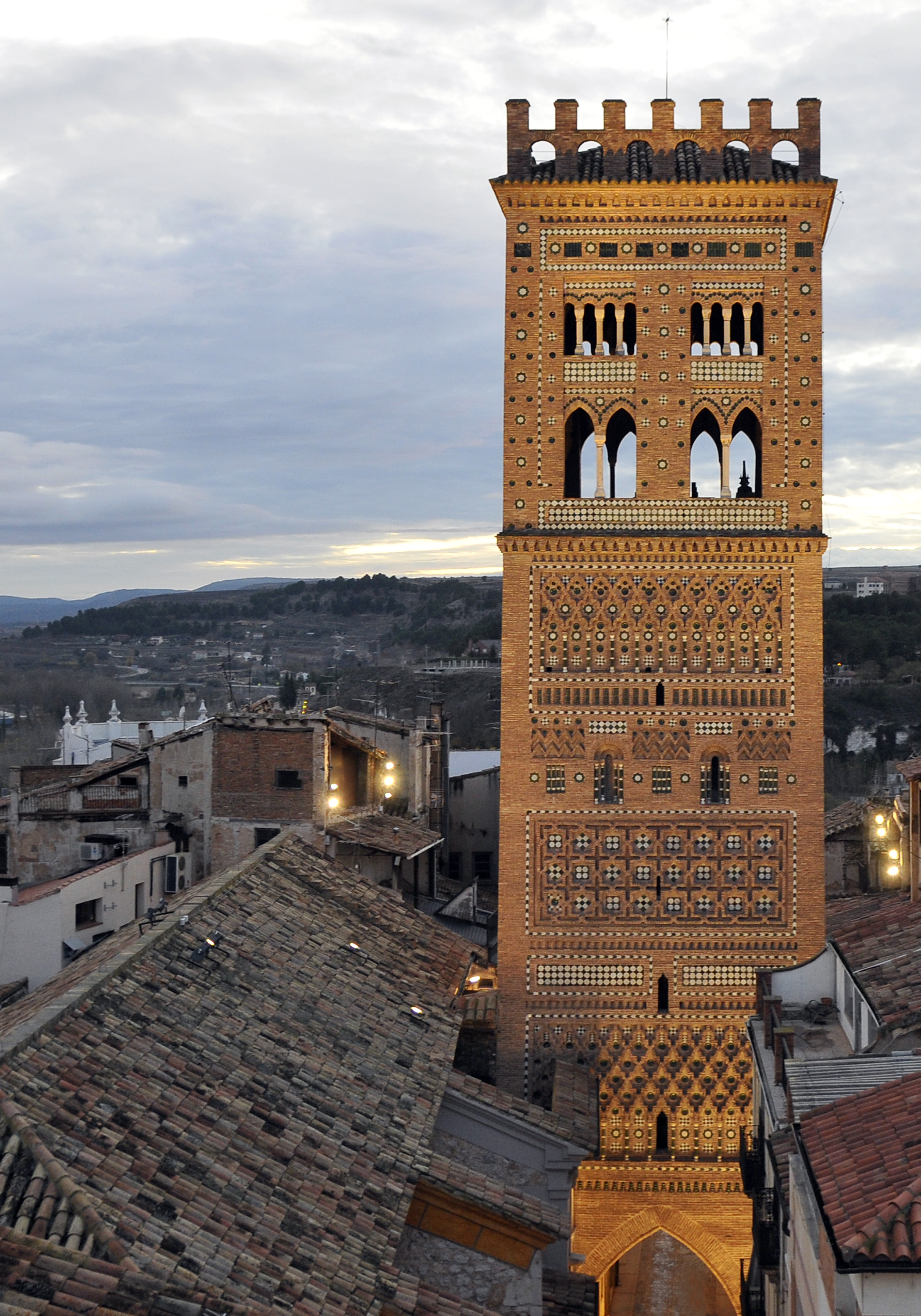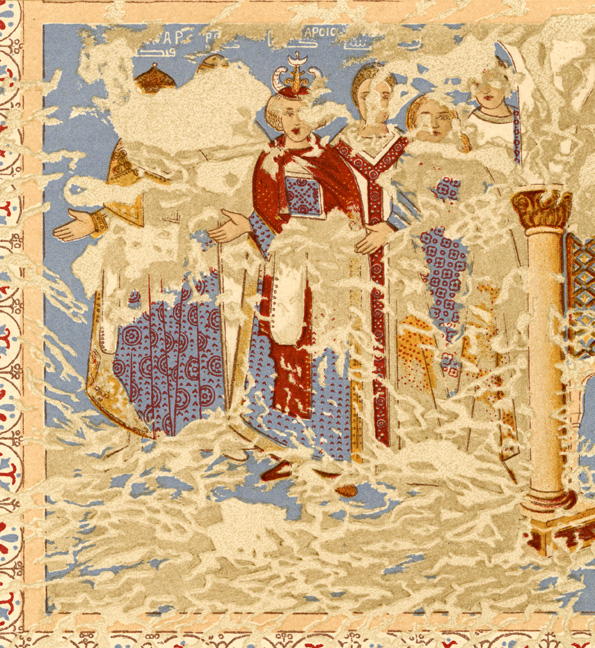|
Mozarab
The Mozarabs (from ), or more precisely Andalusi Christians, were the Christians of al-Andalus, or the territories of Iberia under Muslim rule from 711 to 1492. Following the Umayyad conquest of the Visigothic Kingdom in Hispania, the Christian population of much of Iberia came under Muslim control. Initially, the vast majority of Mozarabs kept Christianity and their dialects descended from Latin. Gradually, the population converted to Islam—an estimated 50% by the year 951 ''Cited in'' —and was influenced, in varying degrees, by Arab customs and knowledge, and sometimes acquired greater social status in doing so. The local Romance vernaculars, with an important contribution of Arabic and spoken by Christians and Muslims alike, are referred to as Andalusi Romance (also called ''Mozarabic language''). Mozarabs were mostly Catholics of the Visigothic or Mozarabic Rite. Due to Sharia and fiqh being confessional and only applying to Muslims, the Christians paid the jizya tax, ... [...More Info...] [...Related Items...] OR: [Wikipedia] [Google] [Baidu] |
Andalusi Romance
Andalusi Romance, also called Mozarabic, refers to the varieties of Ibero-Romance that were spoken in Al-Andalus, the parts of the medieval Iberian Peninsula under Islamic control. Romance, or vernacular Late Latin, was the common tongue for the great majority of the Iberian population at the time of the Umayyad conquest in the early eighth century, but over the following centuries, it was gradually superseded by Andalusi Arabic as the main spoken language in the Muslim-controlled south. At the same time, as the northern Christian kingdoms pushed south into Al-Andalus, their respective Romance varieties (especially Castilian) gained ground at the expense of Andalusi Romance as well as Arabic. The final extinction of the former may be estimated to 1300 AD. The medieval Ibero-Romance varieties were broadly similar (with Castilian standing out as an outlier). Andalusi Romance was distinguished from the others not by its linguistic features primarily, but rather by virtue of bein ... [...More Info...] [...Related Items...] OR: [Wikipedia] [Google] [Baidu] |
Al-Andalus
Al-Andalus () was the Muslim-ruled area of the Iberian Peninsula. The name refers to the different Muslim states that controlled these territories at various times between 711 and 1492. At its greatest geographical extent, it occupied most of the peninsula as well as Septimania under Umayyad rule. These boundaries changed through a series of conquests Western historiography has traditionally characterized as the ''Reconquista'',"Para los autores árabes medievales, el término Al-Andalus designa la totalidad de las zonas conquistadas – siquiera temporalmente – por tropas arabo-musulmanas en territorios actualmente pertenecientes a Portugal, España y Francia" ("For medieval Arab authors, Al-Andalus designated all the conquered areas – even temporarily – by Arab-Muslim troops in territories now belonging to Spain, Portugal and France"), García de Cortázar, José Ángel. ''V Semana de Estudios Medievales: Nájera, 1 al 5 de agosto de 1994'', Gobie ... [...More Info...] [...Related Items...] OR: [Wikipedia] [Google] [Baidu] |
Toledo, Spain
Toledo ( ; ) is a city and Municipalities of Spain, municipality of Spain, the capital of the province of Toledo and the ''de jure'' seat of the government and parliament of the autonomous communities of Spain, autonomous community of Castilla–La Mancha. Toledo is primarily located on the right (north) bank of the Tagus in central Iberian Peninsula, Iberia, nestled in a bend of the river. Built on a previous Carpetanian settlement, Toledo developed into an important Roman city of Hispania, later becoming the capital (''civitas regia'') of the Visigothic Kingdom and seat of a Roman Catholic Archdiocese of Toledo, powerful archdiocese. Often unsubmissive to Emirate of Córdoba, Umayyad central rule during the Islamic period, Toledo (طليطلة) nonetheless acquired a status as a major cultural centre (promoting productive cultural exchanges between the Ummah and the Latin Christendom), which still retained after the Fitna of al-Andalus, collapse of the caliphate and the crea ... [...More Info...] [...Related Items...] OR: [Wikipedia] [Google] [Baidu] |
Muladí
''Muladí'' (, , pl. ; , , pl. ; , or , , pl. or ; , trans. , pl. , or , ) is a term used for the indigenous population of the Iberian Peninsula who adopted Islam after the Muslim conquest of the Iberian Peninsula in the early 8th century. The demarcation of ''muladíes'' from the population of Arab and Berber extraction was relevant in the first centuries of Islamic rule, however, by the 10th century, they diluted into the bulk of the society of al-Andalus. In Sicily, Muslims of local descent or of mixed Arab, and Sicilian origin were also sometimes referred to as . They were also called ('Islamized'). In broader usage, the word is used to describe Arabs of mixed parentage, especially those not living in their ancestral homelands. Etymology The Spanish, Portuguese and Catalan words , or are derived from the Arabic . The basic meaning of is 'a person of mixed ancestry', especially a descendant of one Arab and one non-Arab parent, who grew up under the influence of an ... [...More Info...] [...Related Items...] OR: [Wikipedia] [Google] [Baidu] |
Iberian Romance Languages
The Iberian Romance, Ibero-Romance or sometimes Iberian languages Iberian languages is also used as a more inclusive term for all languages spoken on the Iberian Peninsula, which in antiquity included the non-Indo-European Iberian language. are a group of Romance languages that developed on the Iberian Peninsula, an area consisting primarily of Spain, Portugal, Gibraltar, Andorra and French Catalonia. They are today more commonly separated into West Iberian, East Iberian ( Catalan/ Valencian) and Mozarabic language groups. East Iberian's classification is a subject of ongoing scholarly debate, as some argue that the Occitano-Romance languages composed of Occitan along with the aforementioned two are better classified as Gallo-Romance languages. Evolved from the Vulgar Latin of Iberia, the most widely spoken Iberian Romance languages are Spanish and Portuguese, followed by Catalan-Valencian-Balear and Galician. These languages also have their own regional and local va ... [...More Info...] [...Related Items...] OR: [Wikipedia] [Google] [Baidu] |
Mudéjar
Mudéjar were Muslims who remained in Iberia in the late medieval period following the Christian reconquest. It is also a term for Mudéjar art, which was greatly influenced by Islamic art, but produced typically by Christian craftsmen for Christian patrons. ''Mudéjar'' was used in contrast to both Muslims in Muslim-ruled areas (for example, Muslims of Granada before 1492) and Moriscos, who were often forcibly converted and may or may not have continued to secretly practice Islam. The corresponding term for Christians living under Muslim rule is Mozarabs. Starting from the eleventh century, when larger regions previously under Muslim control fell to Christian kingdoms, treaties were established with the remaining Muslim population which defined their status as Mudejar. Their status, modelled after the dhimmi, established a parallel society with its own religious, legal, administrative and fiscal autonomy and institutions, while being subject to their Christian kings and l ... [...More Info...] [...Related Items...] OR: [Wikipedia] [Google] [Baidu] |
Catholic Church
The Catholic Church (), also known as the Roman Catholic Church, is the List of Christian denominations by number of members, largest Christian church, with 1.27 to 1.41 billion baptized Catholics Catholic Church by country, worldwide as of 2025. It is among the world's oldest and largest international institutions and has played a prominent role in the history and development of Western civilization.Gerald O'Collins, O'Collins, p. v (preface). The church consists of 24 Catholic particular churches and liturgical rites#Churches, ''sui iuris'' (autonomous) churches, including the Latin Church and 23 Eastern Catholic Churches, which comprise almost 3,500 dioceses and Eparchy, eparchies List of Catholic dioceses (structured view), around the world, each overseen by one or more Bishops in the Catholic Church, bishops. The pope, who is the bishop of Rome, is the Papal supremacy, chief pastor of the church. The core beliefs of Catholicism are found in the Nicene Creed. The ... [...More Info...] [...Related Items...] OR: [Wikipedia] [Google] [Baidu] |
Muslim Conquest Of Spain
The Muslim conquest of the Iberian Peninsula (; 711–720s), also known as the Arab conquest of Spain, was the Umayyad conquest of the Visigothic Kingdom of Hispania in the early 8th century. The conquest resulted in the end of Christian rule in most of Iberia and the establishment of Muslim Arab- Moorish rule in that territory, which came to be known as al-Andalus, under the Umayyad dynasty. During the caliphate of the sixth Umayyad caliph al-Walid I (), military commander Tariq ibn Ziyad departed from North Africa in early 711 to cross the Straits of Gibraltar, with a force of about 1,700 men, to launch a military expedition against the Visigoth-controlled Kingdom of Toledo, which encompassed the former territory of Roman Hispania. After defeating king Roderic at the Battle of Guadalete in July the same year, Tariq was reinforced by an Arab force led by his superior ''wali'' Musa ibn Nusayr and continued northward. In 713, Theodemir, the Visigothic count of Murcia cond ... [...More Info...] [...Related Items...] OR: [Wikipedia] [Google] [Baidu] |
Moriscos
''Moriscos'' (, ; ; " Moorish") were former Muslims and their descendants whom the Catholic Church and Habsburg Spain commanded to forcibly convert to Christianity or face compulsory exile after Spain outlawed Islam. Spain had a sizeable Muslim population, the '' mudéjars'', in the early 16th century. The Iberian Union mistrusted Moriscos and feared that they would prompt new invasions from the Ottoman Empire after the Fall of Constantinople, so between 1609 and 1614 they began to expel them systematically from the various kingdoms of the Union. The most severe expulsions occurred in the eastern Kingdom of Valencia. The exact number of Moriscos present in Spain before the expulsion is unknown and can only be guessed based on official records of the edict of expulsion. Furthermore, the overall number who were able to avoid deportation is also unknown, with estimates on the proportion of those who avoided expulsion or returned to Spain ranging from 5% to 40%.Trevor J. Dads ... [...More Info...] [...Related Items...] OR: [Wikipedia] [Google] [Baidu] |
Iberian Peninsula
The Iberian Peninsula ( ), also known as Iberia, is a peninsula in south-western Europe. Mostly separated from the rest of the European landmass by the Pyrenees, it includes the territories of peninsular Spain and Continental Portugal, comprising most of the region, as well as the tiny adjuncts of Andorra, Gibraltar, and, pursuant to the traditional definition of the Pyrenees as the peninsula's northeastern boundary, a small part of France. With an area of approximately , and a population of roughly 53 million, it is the second-largest European peninsula by area, after the Scandinavian Peninsula. Etymology The Iberian Peninsula has always been associated with the River Ebro (Ibēros in ancient Greek and Ibērus or Hibērus in Latin). The association was so well known it was hardly necessary to state; for example, Ibēria was the country "this side of the Ibērus" in Strabo. Pliny the Elder, Pliny goes so far as to assert that the Greeks had called "the whole of the peninsula" Hi ... [...More Info...] [...Related Items...] OR: [Wikipedia] [Google] [Baidu] |
Umayyad Caliphate
The Umayyad Caliphate or Umayyad Empire (, ; ) was the second caliphate established after the death of the Islamic prophet Muhammad and was ruled by the Umayyad dynasty. Uthman ibn Affan, the third of the Rashidun caliphs, was also a member of the clan. The family established dynastic, hereditary rule with Mu'awiya I, the long-time governor of Bilad al-Sham, Greater Syria, who became caliph after the end of the First Fitna in 661. After Mu'awiya's death in 680, conflicts over the succession resulted in the Second Fitna, and power eventually fell to Marwan I, from another branch of the clan. Syria remained the Umayyads' main power base thereafter, with Damascus as their capital. The Umayyads continued the Early Muslim conquests, Muslim conquests, conquering Ifriqiya, Transoxiana, Sind (caliphal province), Sind, the Maghreb and Hispania (al-Andalus). At its greatest extent (661–750), the Umayyad Caliphate covered , making it one of the largest empires in history in terms of ar ... [...More Info...] [...Related Items...] OR: [Wikipedia] [Google] [Baidu] |





